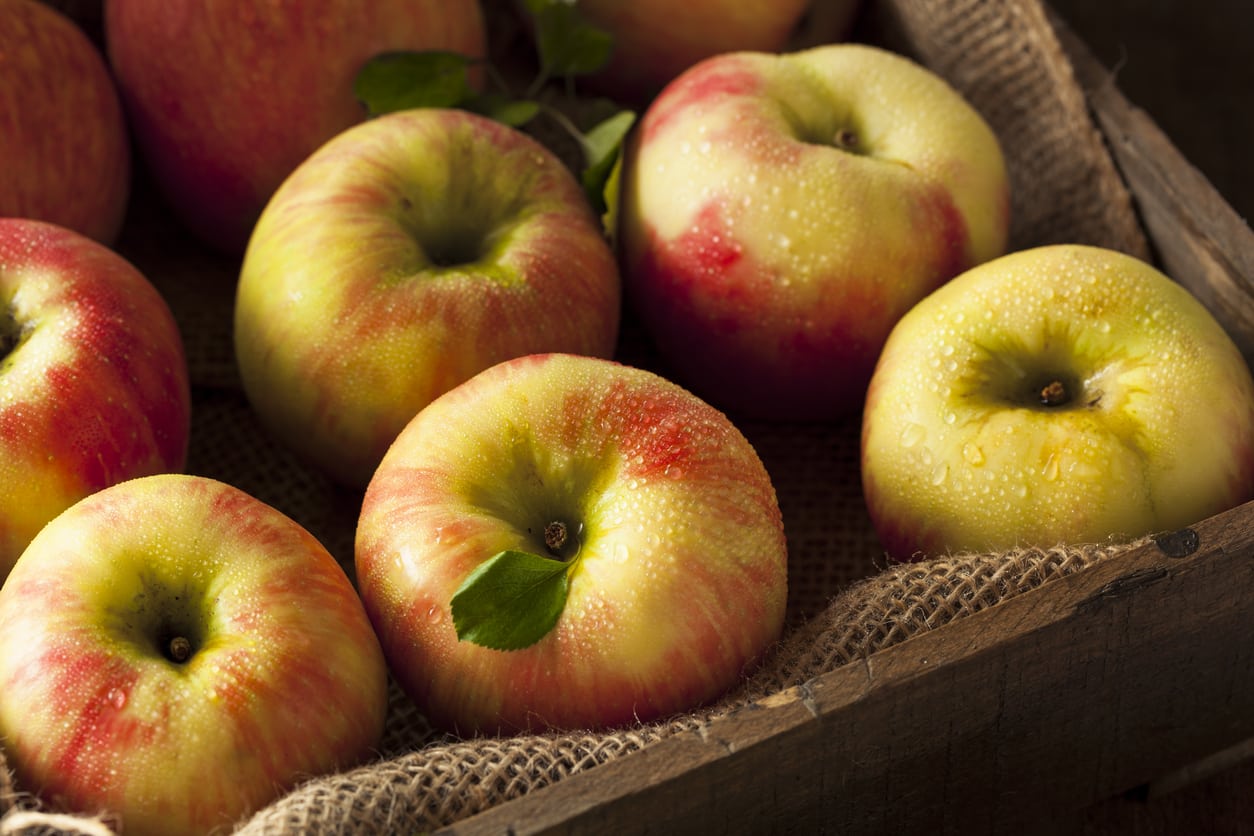Honeycrisp Apple Care – How To Grow A Honeycrisp Apple Tree


For apple lovers, fall is the best time of the year. That's when markets are filled with Honeycrisp apples. If these are your favorite and you are thinking of growing Honeycrisp apples, we have some tips for optimal success. These sweet, crunchy fruits are consistently rated as one of the highest quality apples with a long storage life. Plant a tree and in just a few years you will have a bumper Honeycrisp apple harvest.
Honeycrisp Apple Information
Honeycrisp apples are noted for their creamy, juicy flesh and versatility. Whether you want a pie fruit, sauce apple or fresh crispy specimen, honey crisp apples are winners. The trees are widely available and Honeycrisp apple information touts their cold hardiness, making trees suitable into United States Department of Agriculture zone 4 and possibly 3 in protected locations. Learn how to grow a Honeycrisp apple tree and enjoy years of mid-season fruits with unparalleled flavor. Honeycrisp trees are available on dwarf or regular rootstock. They are reliable bearers and produce fruit very early in maturity. The tree originated in Excelsior, Minnesota in 1974 and has become one of the more popular modern varieties. Fruits are rosy red, medium sized and have thin skins. Fruits do not ripen uniformly on the tree and flavor doesn't develop once harvested, so multiple harvests are required on this apple. However, this means fresh apples for weeks and they store wonderfully for up to 7 months in a cool, dark location. In Europe, the fruit is known as the Honeycrunch apple and performs well in cooler regions.
How to Grow a Honeycrisp Apple Tree
Plant young apple trees in well amended and loosened loamy soil in a full sun location. Soil must drain freely and have a pH range of 6.0 to 7.0. The tree does need a pollinating companion to set fruit. Choose an early to mid-season bloomer. The trees seem to do best when trained to a central leader, so some staking will be required for the first few years. As the tree begins to bear, excess fruits on the lower stems should be removed to reduce breakage. Prune young trees in winter when they are dormant to produce a strong scaffold capable of holding the heavy fruits. Most Honeycrisp apple harvest occurs in September but can last into October. Handle the delicate fruits carefully, as they are prone to bruising and damage due to the thin skins.
Honeycrisp Apple Care
These trees are prone to several diseases and pests, although they are resistant to apple scab. Young trees are susceptible to fire blight but mature trees seem unbothered by the disease. Mildew, flyspeck and sooty blotch are fungal diseases of concern. Most pests cause cosmetic damage to the fruit such as codling moths and leafrollers, but aphids attack new growth and flower buds, reducing vigor and yield. Apply appropriate pesticides such as horticultural soap at 7-day intervals to control sucking insects. Codling moths are best controlled using sticky traps early in the season.
Sign up for the Gardening Know How newsletter today and receive a free copy of our e-book "How to Grow Delicious Tomatoes".

Bonnie Grant is a professional landscaper with a Certification in Urban Gardening. She has been gardening and writing for 15 years. A former professional chef, she has a passion for edible landscaping.